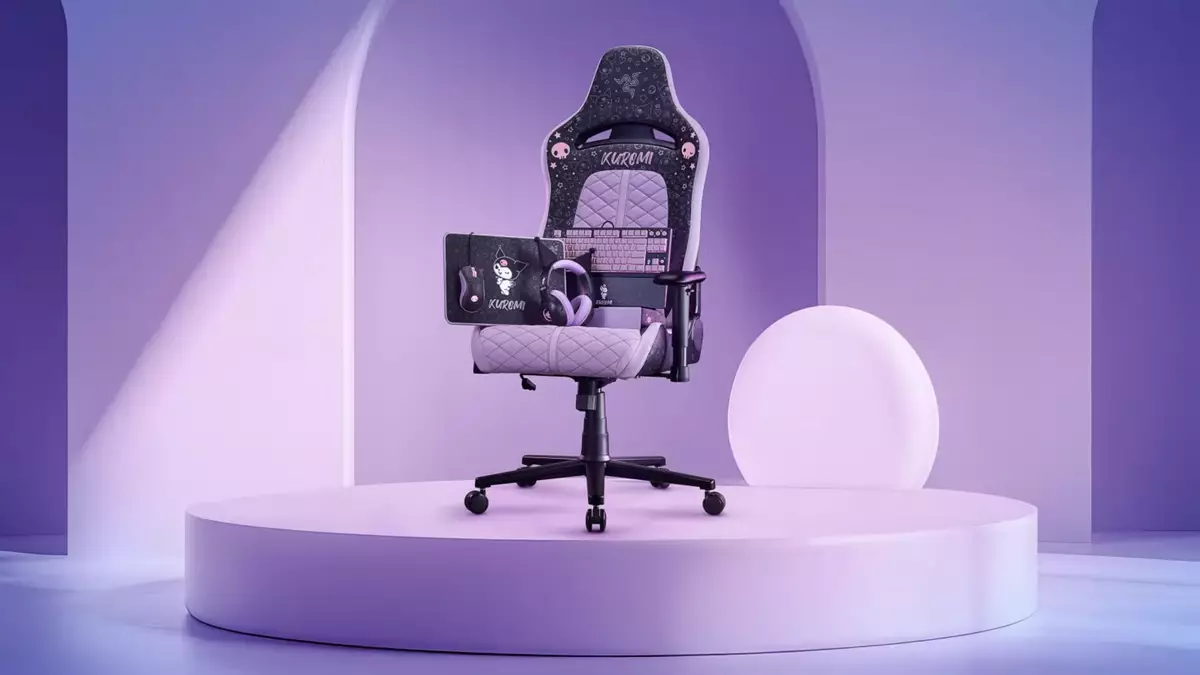The gaming peripheral market has seen its share of collaborations and limited editions, but few are as whimsical and nostalgic as the recent Razer and Sanrio partnership, bringing the beloved character Kuromi to the forefront of gaming gear. Originally confined to China, this collaboration has made its grand appearance in the United States, much to the delight of fans. The aggressive marketing strategy employed here shows insight into a growing subset of gamers who favor unique, character-driven peripherals that reflect their personal style. It’s clear that Razer is acknowledging a significant demand for items that blend performance with playful aesthetics.
Like many kids of the 90s and early 2000s, the nostalgia factor plays a vital role in purchasing decisions. It’s not merely about gaming anymore; it’s about representing one’s identity through the tools they choose. The Razer Kuromi collection offers a suite of products that go beyond function—delivering an opportunity for self-expression. But how does this collection stand out against others in the saturated market of gaming peripherals?
The Aesthetic Appeal of the Kuromi Collection
Arguably, the color palette of black and purple is a welcome deviation from the monotonous offerings of black and pink that have long dominated the gaming hardware scene. Razer’s choice to incorporate Kuromi’s iconic color scheme not only grabs attention but also attracts a diverse customer base looking for something different. Products in the range include the stylish Enki X gaming chair, the sleek tenkeyless Ornata V3 keyboard, a versatile mouse, and even a Leviathan V2 X soundbar—all of which have their signature flair.
One standout from the collection is the unique Kuromi-themed headset, which draws attention with its unusual design. The headset’s jester ears significantly differentiate it from the plethora of cat-themed headsets currently available. The eccentric and avant-garde design not only catches the eye but also speaks to a market that appreciates creativity. However, this design approach may also alienate traditional gamers who prefer straightforward aesthetics. It’s a bold move by Razer—balancing on the tightrope of risk and reward.
Now, let’s address the elephant in the room: the price point. The Kuromi Kraken Kitty V2 headset is available at a steeper cost of $130, a notable increase over standard designs. This pricing strategy raises questions about accessibility. While some consumers might view the cost as a worthy investment for the added personality, others may see it as elitist, targeting primarily younger fans with disposable income. This strategic choice, though perhaps a narrative of exclusivity for brand loyalty, inherently narrows the potential customer base.
Pricing utility is essential in the gaming market, especially as a wider demographic of gamers seeks high-performance gear. For those that desire both aesthetic and function, the challenge arises in justifying the premium attached to these themed releases. Will Razer’s savvy marketing efforts and the allure of nostalgia be sufficient to offset concerns over cost?
Is it enough to engage with the U.S. market, or do we foresee future expansions into Europe and beyond? As an observer, it is exciting yet sobering to realize that significant collaborations like this can sometimes fail to expand past their initial market. However, if Razer can capitalize on its current momentum and bridge itself into other territories, it could broaden its reach significantly.
Moreover, eyes are turning toward other collaborations, with fans eagerly anticipating possible partnerships resembling the Kuromi collection, such as the previously China-exclusive Gengar gear. The gaming community seems eager for more than just standard hardware; they seek identity and community through their gear.
Ultimately, the Razer Kuromi collaboration appears to be a well-calibrated blend of innovation, nostalgia, and aesthetic appeal that has the potential to resonate widely within the gaming community. As the landscape of gaming peripherals evolves, it will be intriguing to observe how brands adapt and continue to cater to a demographic that values character and individuality—pushing the envelope of what gaming gear can represent. Whether this particular collaboration can maintain its appeal over time remains to be seen, but for now, it stands as a bold statement piece in the realm of gaming peripherals.

